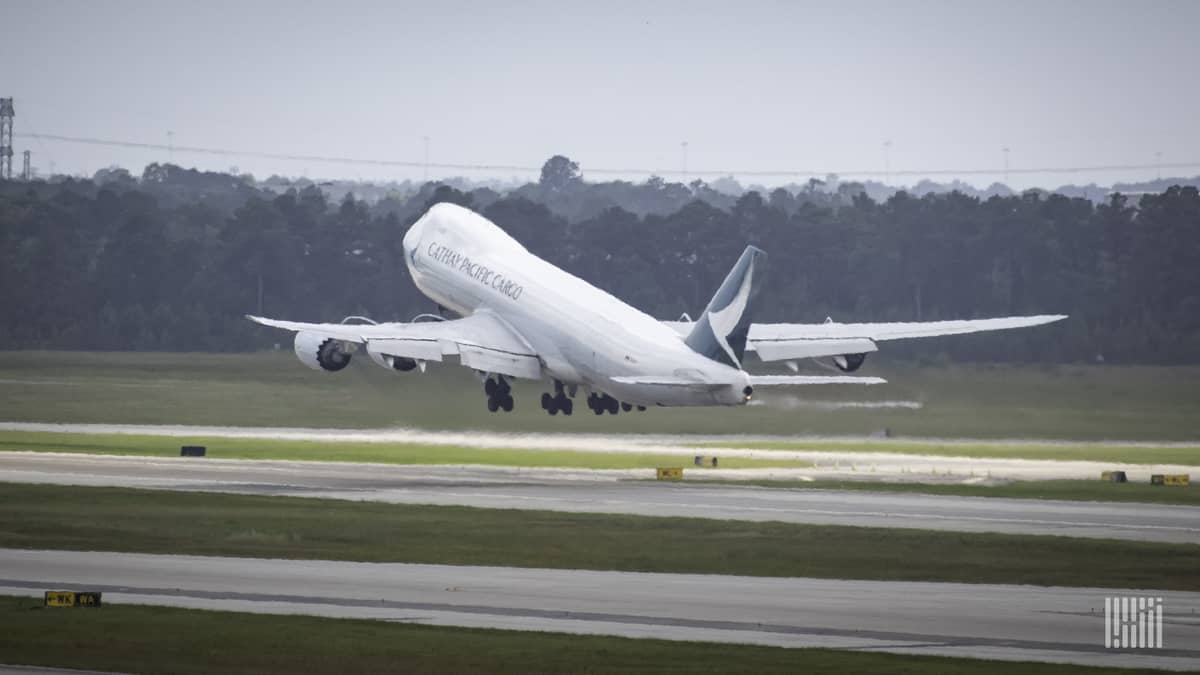Cathay Pacific, a major Asian airline that also operates a large fleet of dedicated freight aircraft, and Austrian Airlines are recapitalizing with the assistance of home governments, the latest in a string of airlines receiving outside assistance to keep operating until travel demand rebounds.
Cathay Pacific (OTCUS: CPCAY) said Tuesday it will issue warrants giving the government of Hong Kong the right to purchase HK$19.5 billion ($2.5 billion) worth of stock and that it received a HK$7.8 billion bridge loan from the government. It also is offering stock to existing shareholders to raise an additional HK$11.7 billion. The money will be used for ongoing operations and restructuring, with officials saying they will offer a plan to downsize later this year.
Airlines were forced to park most of their aircraft and slash budgets to preserve cash during the height of the coronavirus outbreak after governments closed borders and travel demand plummeted. Cathay Pacific iced 97% of its passenger capacity, deferred new aircraft orders, retired older aircraft, cut executive pay and got 80% of its employees to accept voluntary unpaid leave.
With its fleet of widebody passenger aircraft and 21 Boeing 747 freighters, Cathay ranks as the fifth-largest cargo airline in the world based on the industry’s standard measure of tonnage and distance carried. It also owns all-cargo carrier Air Hong Kong, as well as Cathay Dragon and Hong Kong Express.
“Despite all these measures, the collapse in passenger revenue to only around 1% of prior year levels has meant that we have been losing cash at a rate of approximately HK$2.5 billion to HK$3 billion per month since February, and the future remains highly uncertain,” said Chairman Patrick Healy in a statement. “The infusion of new capital that we have announced today does not mean we can relax. Indeed quite the opposite. It means that we must redouble our efforts to transform our business in order to become more competitive. Today we have announced a new round of executive pay cuts, and a second voluntary special leave scheme for our employees.”
Cathay Pacific’s crisis dates back to massive pro-democracy protests that began in mid-2019 and scared away travelers, driving down the airline’s passenger traffic and reducing cargo capacity for shippers.
The Hong Kong airline is more vulnerable than most of its competitors because it doesn’t have a domestic network to lean on. Analysts and industry officials say they expect domestic travel to improve first, followed by regional and then international travel, which remains more subject to government-imposed quarantine restrictions.
In April, the Hong Kong Airport Authority provided a HK$2 billion relief package that included purchasing 500,000 tickets in advance from Cathay and three other home-based airlines and equipment from aviation support contractors, who can then use it rent-free for an undetermined period.
The International Air Transport Association on Tuesday gave an industry outlook for $84 billion in losses for 2020, essentially wiping away profits from the past three years. It urged governments again to aid airlines as partners in the economic recovery but cautioned against adding debt to airline balance sheets because that will make a return to profitability more difficult.
Austrian’s sustainability conditions
Meanwhile, Austrian Airlines, which completely shut down for almost three months, accepted 150 million euros ($170 million) in state aid to cover coronavirus-related losses in exchange for commitments to further reduce aircraft emissions. The airline also received a 150 million euro capital injection from parent company Deutsche Lufthansa AG, borrowed 300 million euros from banks to be repaid by 2026 and received concessions worth 450 million euros from employees and vendors.
The government aid is designed to safeguard Vienna International Airport as an aviation hub. Local economists say Austrian Airlines and its Vienna hub support 17,500 jobs and 1 billion euros in duties and taxes. The aid package is contingent on the finalization of Lufthansa’s own $10 billion government bailout in Germany, shareholder approvals and endorsement of the European Commission.
The requirements for sustainability are quite expansive. The U.S. government opted not to put environmental conditions on the $58 billion in aid it offered to passenger and cargo airlines in late March.
Under the agreement, Austrian will shift as much short-haul passenger traffic as possible to railroads as long as customers can be ensured of travel times under three hours. It also must cut in half carbon emissions within Austria by 2030 and overall emissions by 30% from 2005 levels, increase jet fuel efficiency by 1.5% annually, and reduce carbon dioxide emissions per 100 passenger kilometers from 9.55 kilograms (21 pounds) to 8.5 kilograms by 2030. The government will be allowed two representatives on Austrian’s board to monitor compliance with the agreement.
Austrian previously sought 767 million euros in financing, but an earlier-than-expected restart of limited operations in mid-June and the ability to secure other capital reduced the amount of federal aid it ultimately needed. The Austrian government is guaranteeing 90% of the loans.
Nearly 7,000 Austrian employees have agreed to wage reductions worth about 300 million euros, while more than 1,000 suppliers and business partners will forego more than 150 million euros in payments.
“I am relieved and thankful that we have succeeded together in making Austrian Airlines ready for take-off again,” CEO Alexis von Hoensbroech said in a statement.
(Click here for more FreightWaves stories by Eric Kulisch.)











